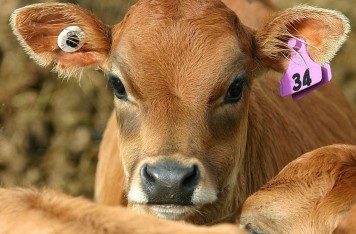Buying or selling calves? Be a mate, update NAIT
With calf sales picking up, it’s important to make sure that the movements are done right. Here’s what you need to know to meet your NAIT obligations and play your part in supporting lifetime traceability.
 Remember your NAIT basics
Remember your NAIT basics
When you buy or sell calves, your NAIT and TBfree obligations remain the same as for other cattle. Make sure to:
- fit all calves with a NAIT tag before they reach 180 days old or before their first movement off-farm, whichever comes first (the tag should preferably be in the central or inner part of the right ear, between two veins)
- register any fitted NAIT tags within 7 days of tagging or before first movement off farm, whichever comes first
- use a tag scanner to make registering your animals and recording movements easier.
Buying calves
If you’re buying calves, confirm with the seller:
- that they have completed an Animal Status Declaration (ASD) form
- that the calves are tagged and registered in NAIT
- what the calves’ TB status is.
When the animals arrive, read or scan the tags and make sure to create or confirm a receiving movement for them within 48 hours of the end of the day that you received them.
If you receive calves that are untagged, you’ll need to contact OSPRI. You can then either return the animals to the seller or tag and register them yourself.
Selling calves
If you’re selling calves, make sure they are tagged correctly and registered in NAIT before moving them off-farm.
Failing to tag and register your calves is an offence, unless they are exempt from tagging. Bobby calves under 30 days of age are exempt if they are going directly to slaughter from the property they were born on. You also need to:
- find out the NAIT location number of the buyer
- fill out an ASD form
- fill out the declaration to livestock transporter
- create or confirm a sending movement within 48 hours of the end of the day you sent them.
If you’re sending animals to an accredited saleyard, they will record the movement on your behalf. However, the animals still need to be tagged and registered before this occurs.
If you’re moving animals from a Movement Control Area they will need to be pre-movement tested.
Helpful tips and tricks
Want to make sure your calf movements go smoothly? Here are some top tips.
- Ensuring all animals are tagged correctly before they need to leave lessens the chances of lost tags during transit. It also means less work required on the day of the move.
- If you are taking part in a private sale, getting all the required details (like the NAIT number of the other party) before or during the sale will make meeting your NAIT obligations easier.
- Both buyers and sellers need to record a NAIT movement. Don’t wait for the other person to record the movement and record the movement as you know it to be correct.
Need a hand?
Our NAIT user guide videos contain step-by-step instructions on how to complete tasks in the NAIT system.
Our calving checklist simplifies the process of buying or selling calves into an easy-to-follow list.

